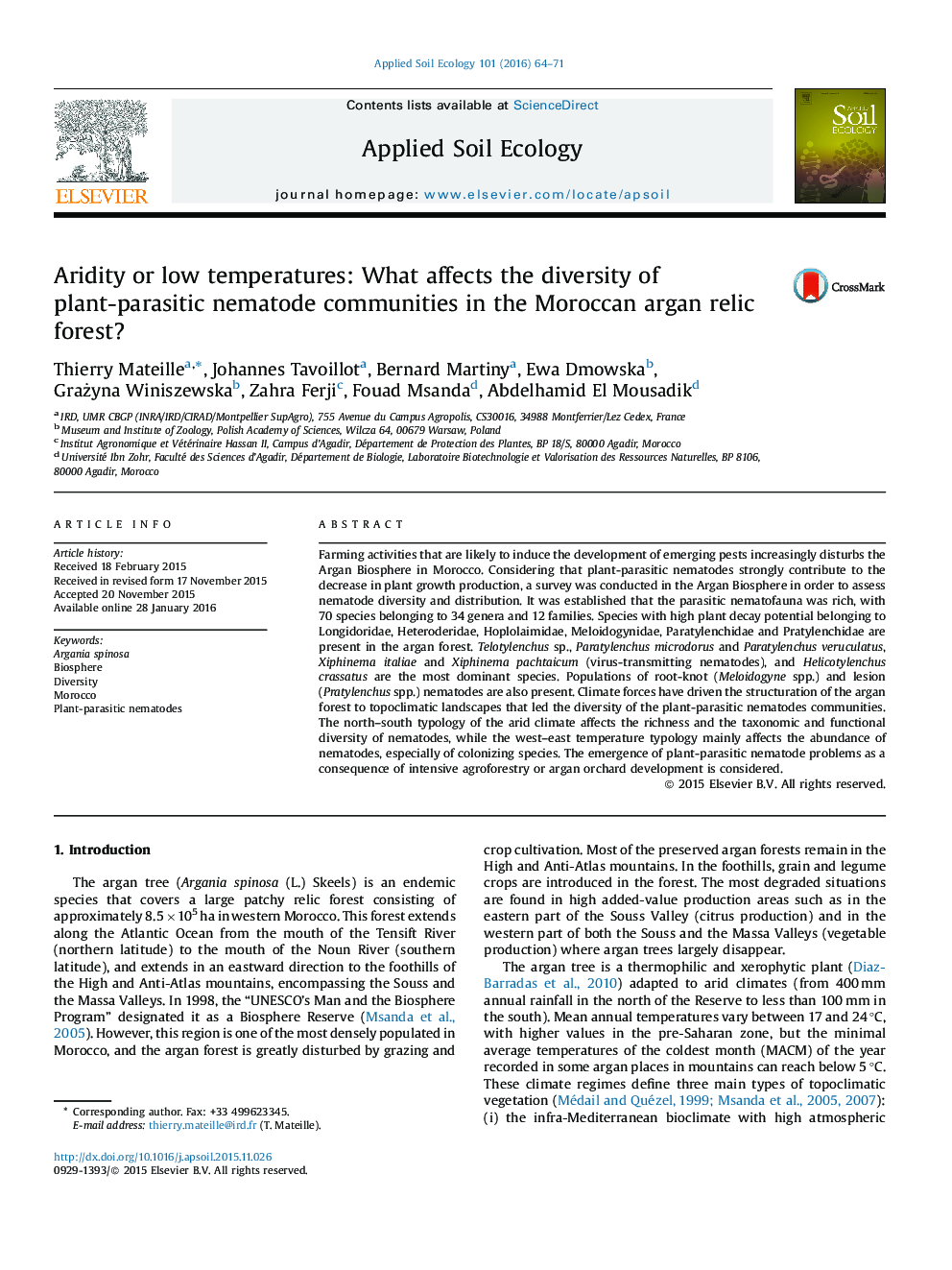| Article ID | Journal | Published Year | Pages | File Type |
|---|---|---|---|---|
| 6297687 | Applied Soil Ecology | 2016 | 8 Pages |
â¢We detected 70 plant-parasitic nematode species in the argan relic forest in Morocco.â¢High pathogenic species are present in natural conditions.â¢Richness decreases with increasing aridity from north to south of the argan area.â¢The abundance of colonizing species is more related to the temperature.
Farming activities that are likely to induce the development of emerging pests increasingly disturbs the Argan Biosphere in Morocco. Considering that plant-parasitic nematodes strongly contribute to the decrease in plant growth production, a survey was conducted in the Argan Biosphere in order to assess nematode diversity and distribution. It was established that the parasitic nematofauna was rich, with 70 species belonging to 34 genera and 12 families. Species with high plant decay potential belonging to Longidoridae, Heteroderidae, Hoplolaimidae, Meloidogynidae, Paratylenchidae and Pratylenchidae are present in the argan forest. Telotylenchus sp., Paratylenchus microdorus and Paratylenchus veruculatus, Xiphinema italiae and Xiphinema pachtaicum (virus-transmitting nematodes), and Helicotylenchus crassatus are the most dominant species. Populations of root-knot (Meloidogyne spp.) and lesion (Pratylenchus spp.) nematodes are also present. Climate forces have driven the structuration of the argan forest to topoclimatic landscapes that led the diversity of the plant-parasitic nematodes communities. The north-south typology of the arid climate affects the richness and the taxonomic and functional diversity of nematodes, while the west-east temperature typology mainly affects the abundance of nematodes, especially of colonizing species. The emergence of plant-parasitic nematode problems as a consequence of intensive agroforestry or argan orchard development is considered.
